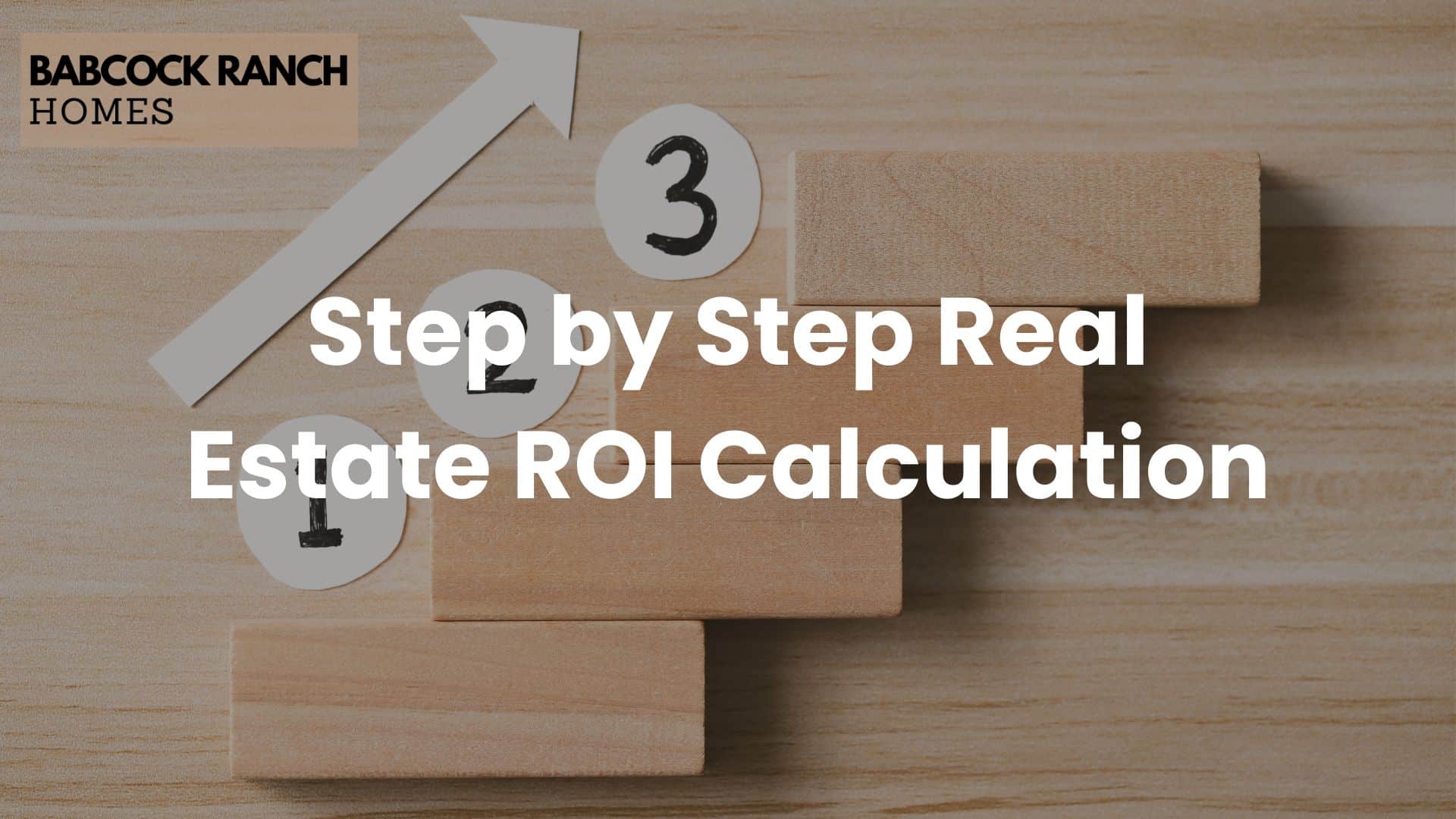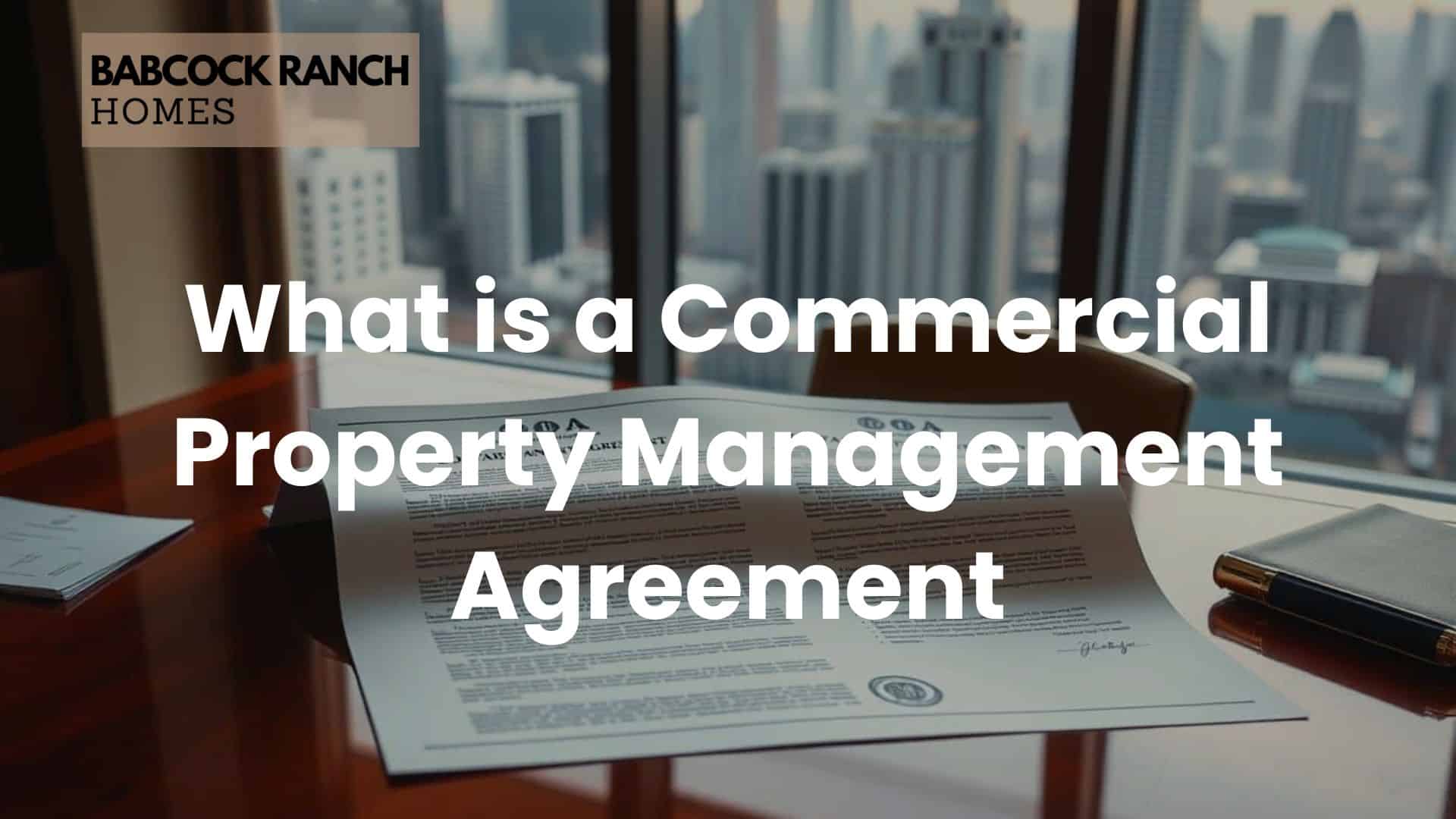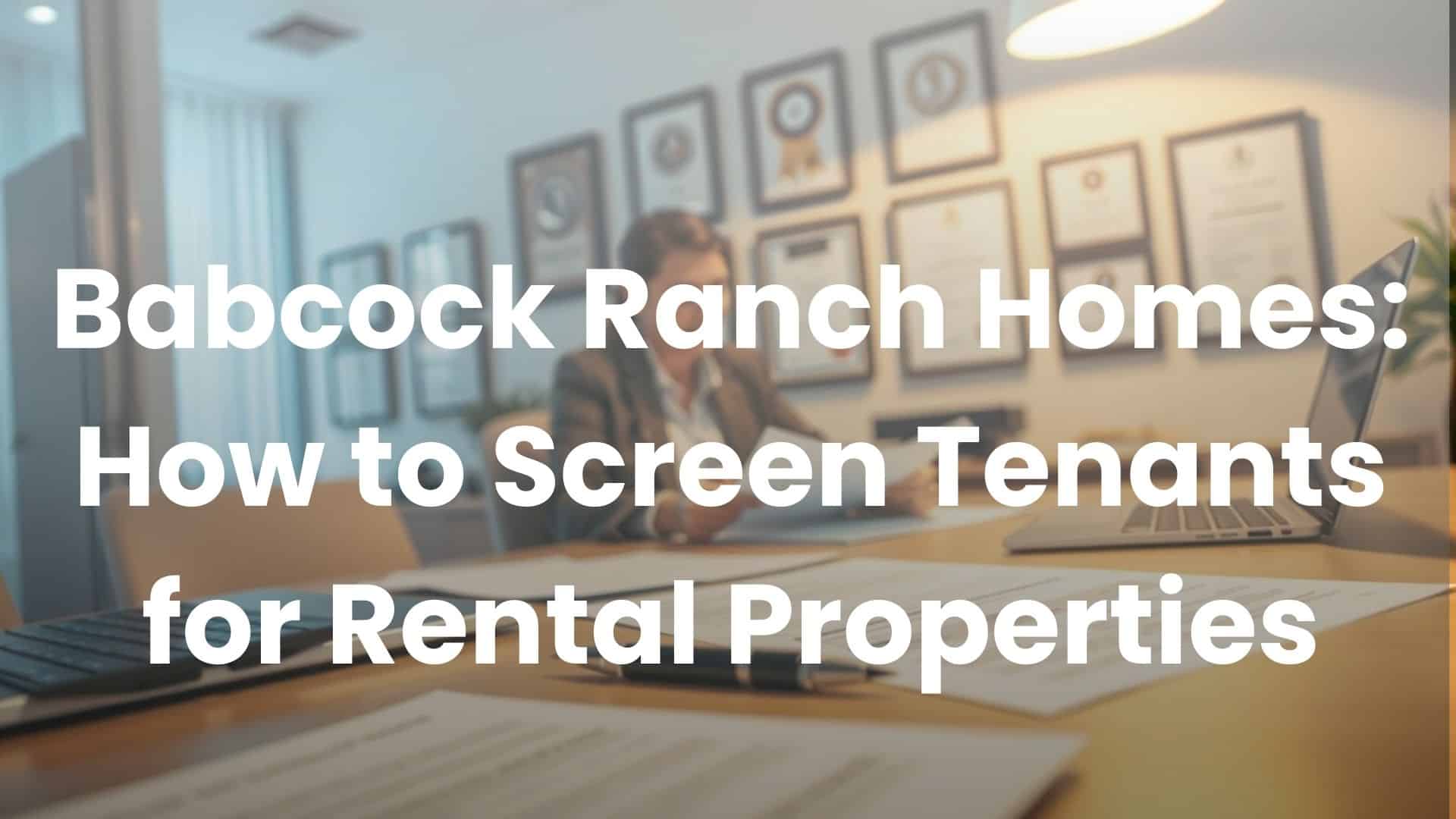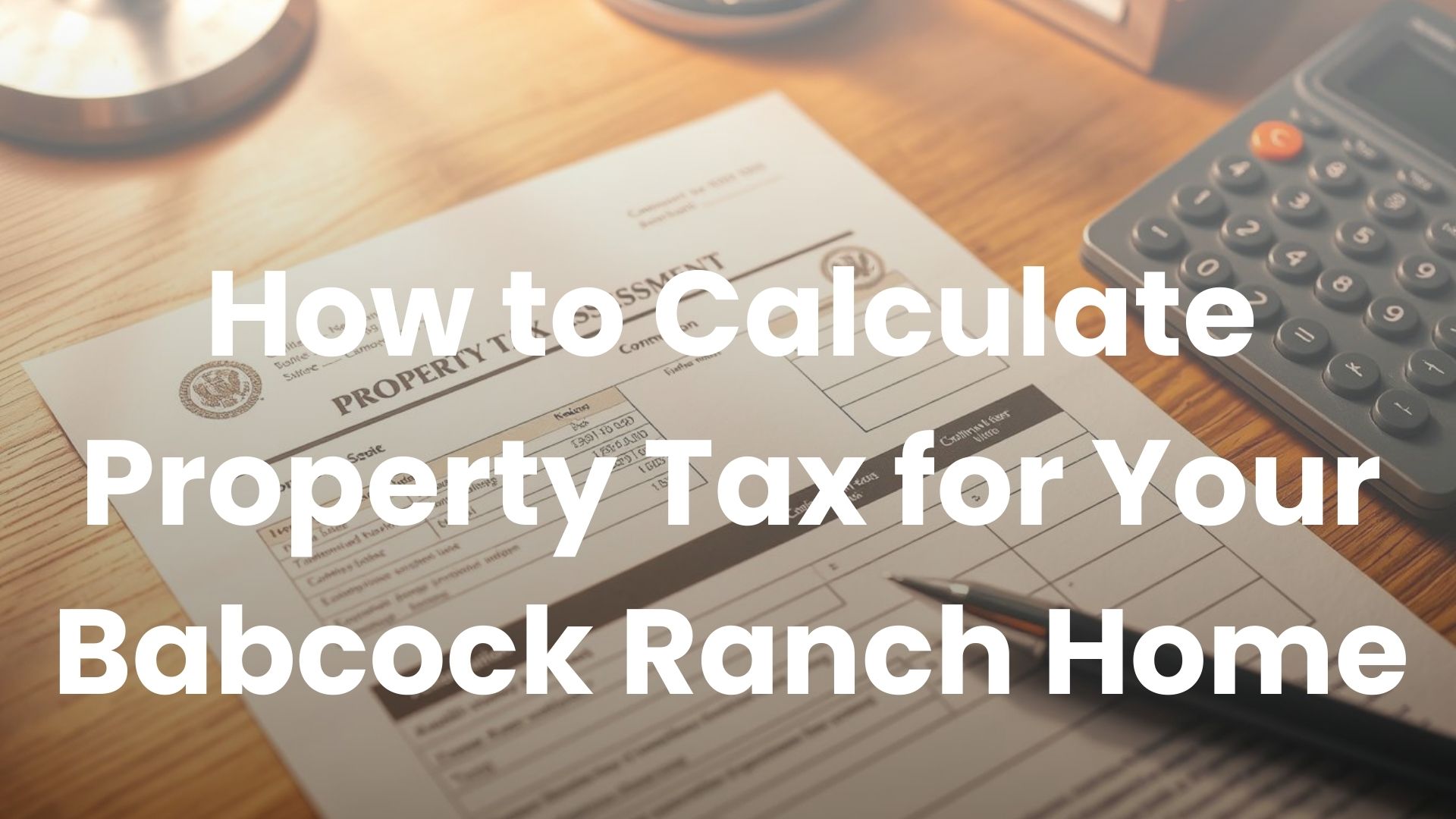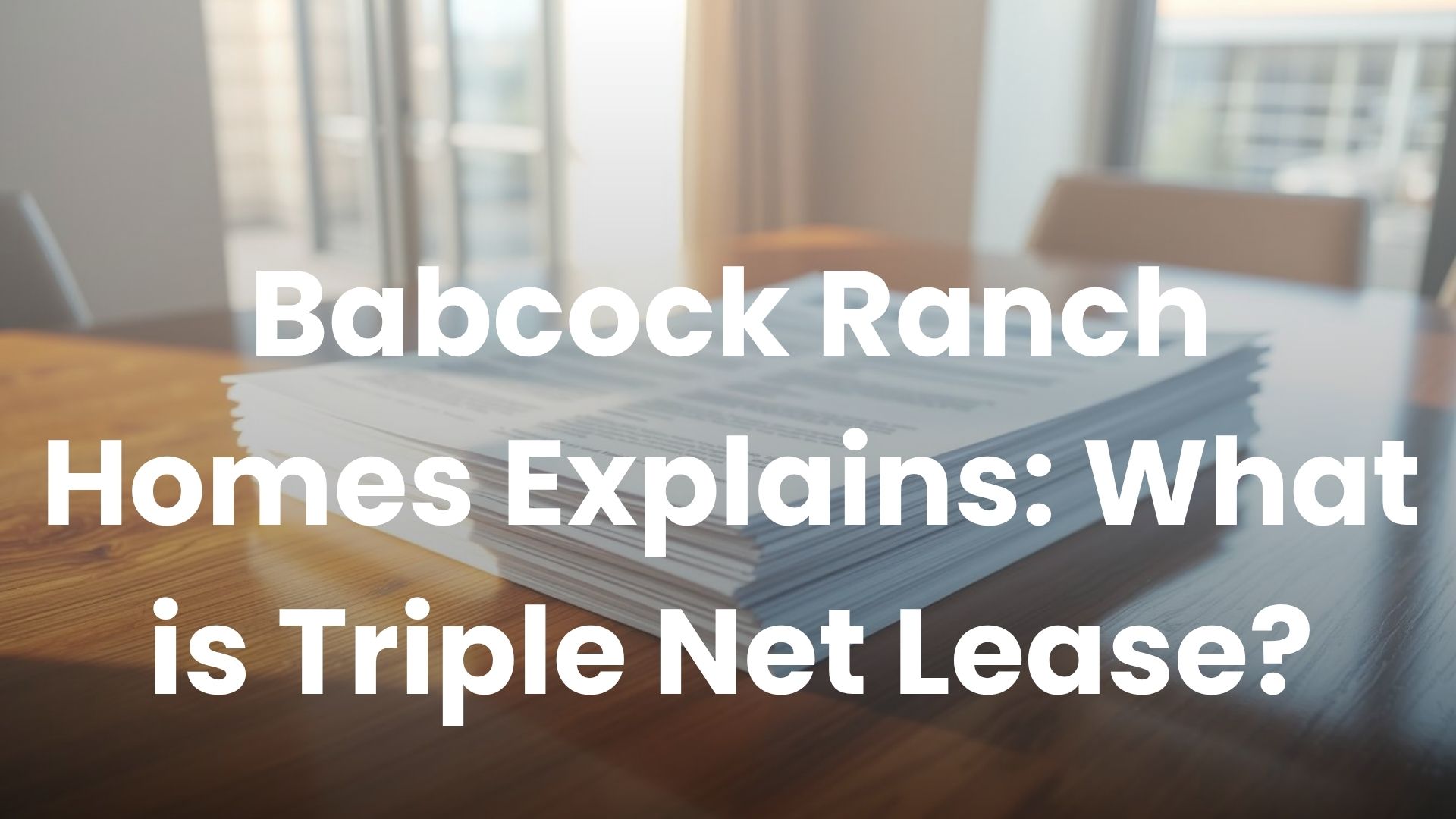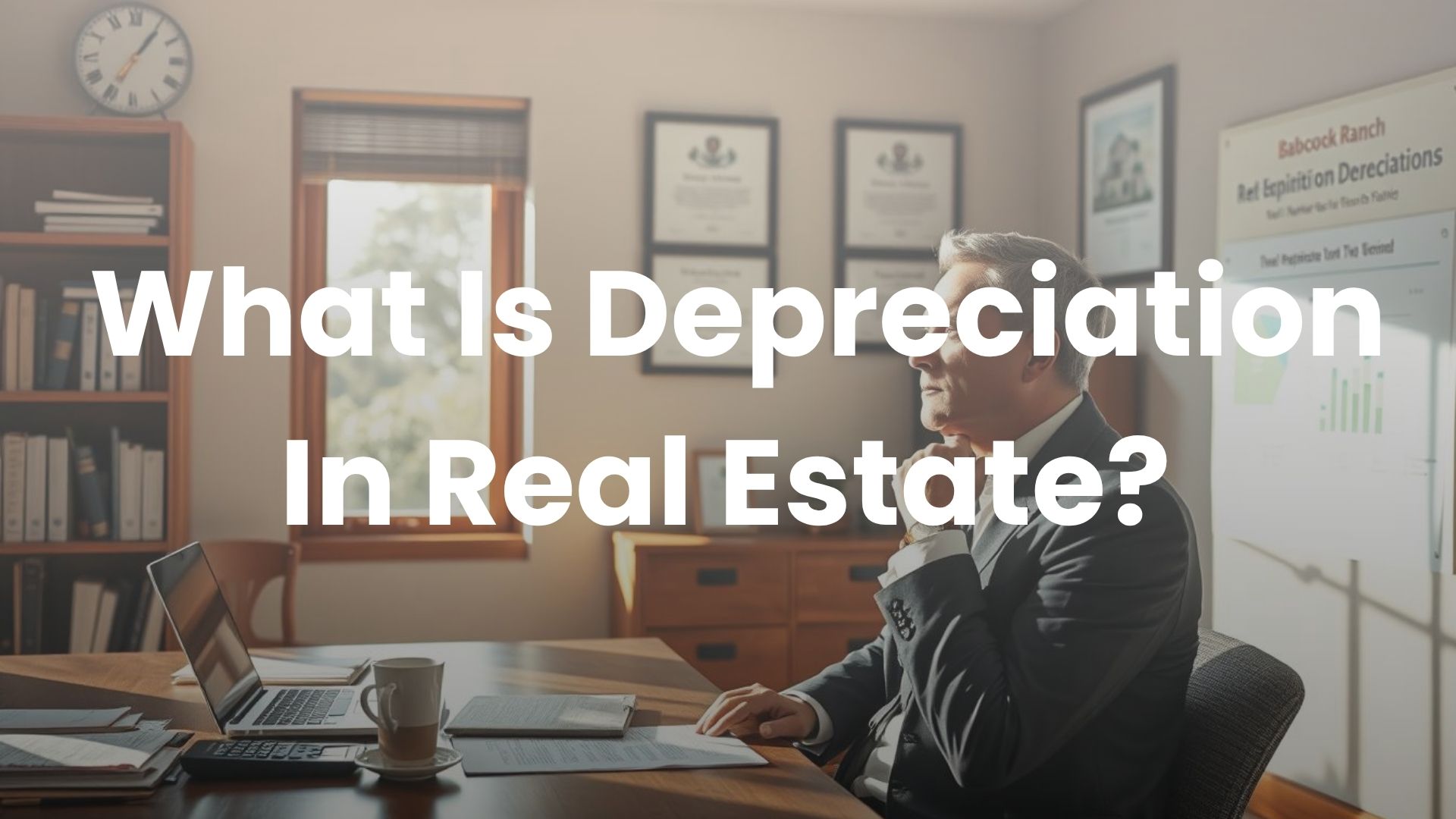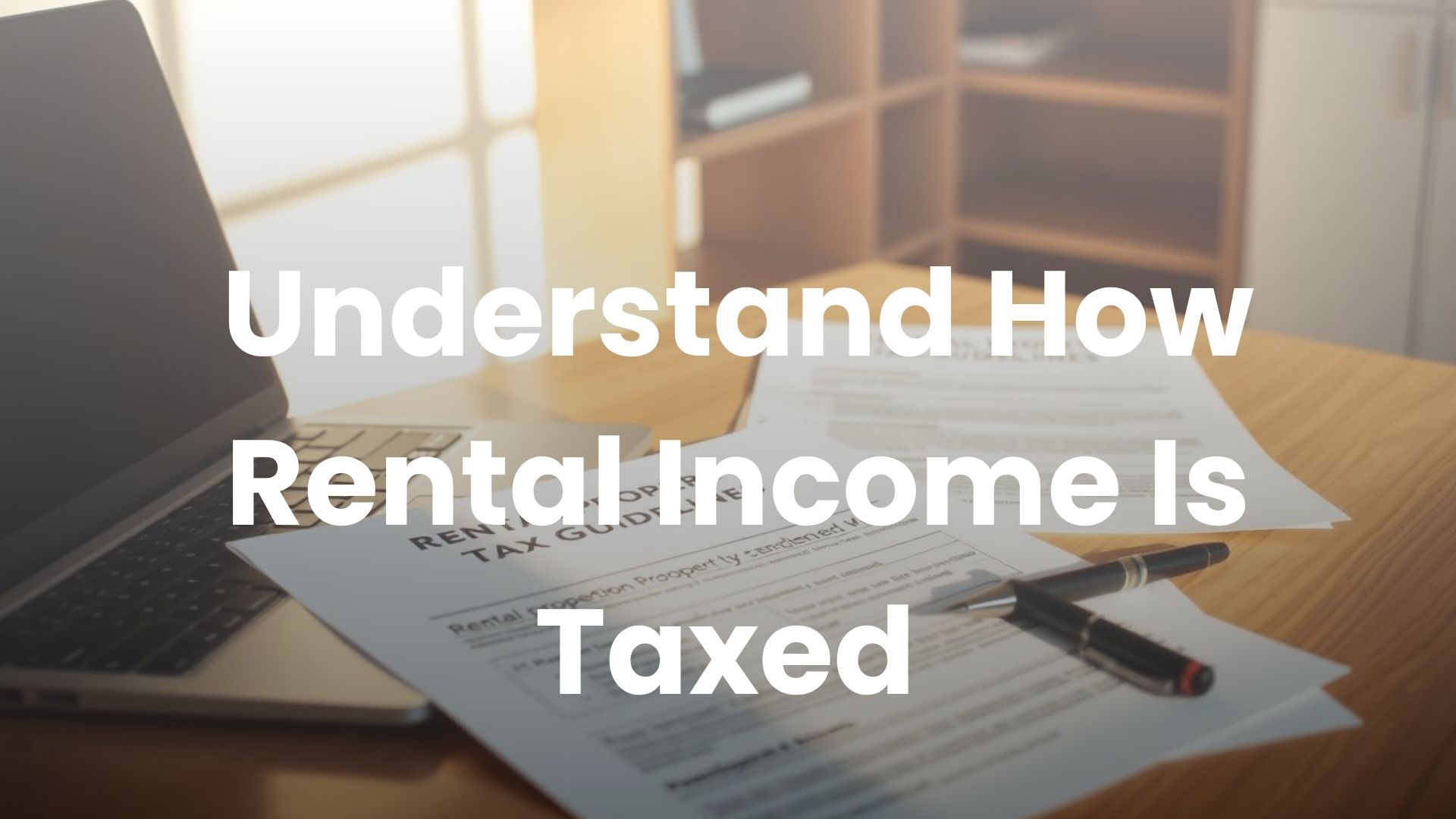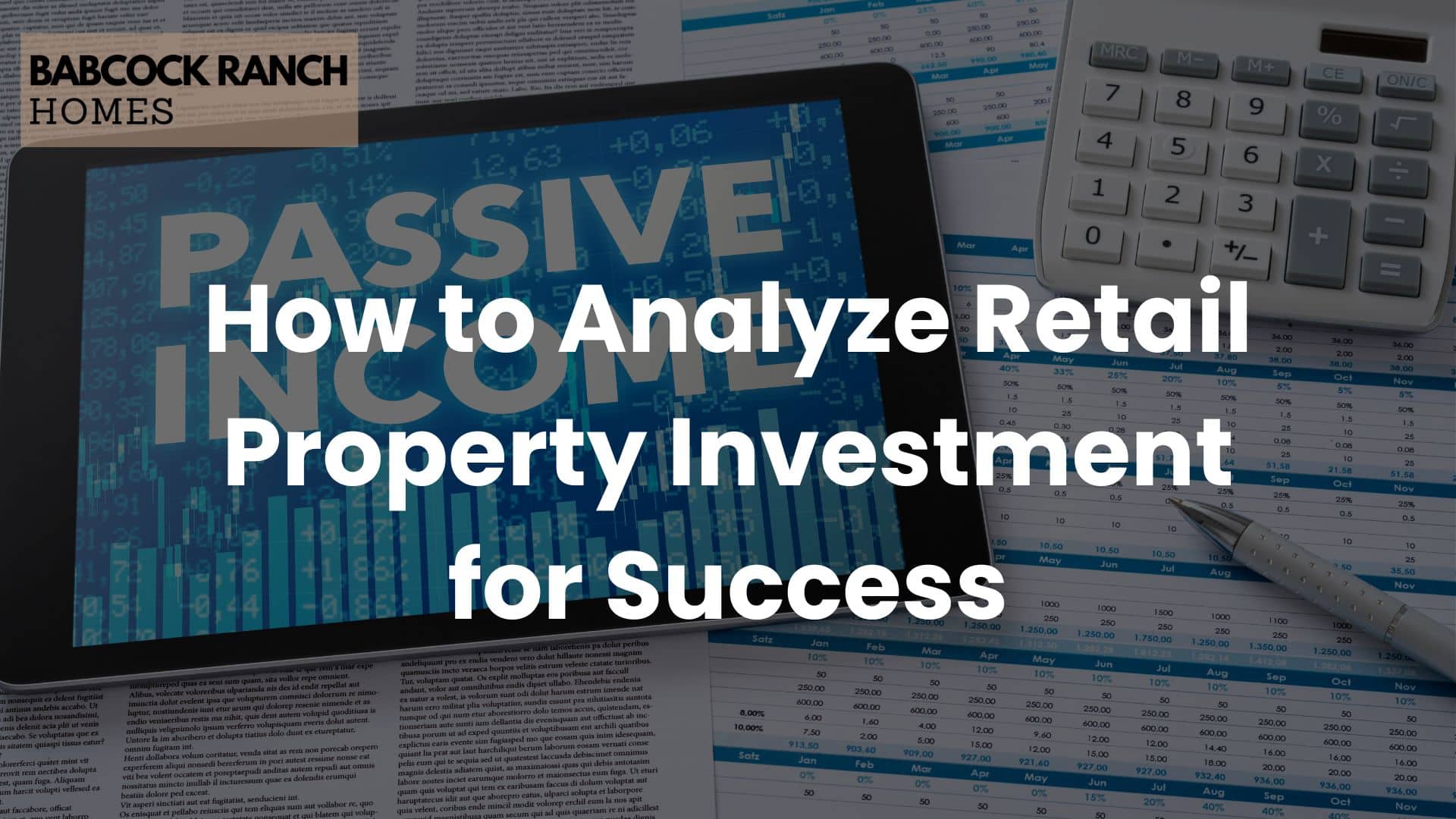
Building long-term wealth often starts with smart investments. For those exploring opportunities in property ownership, leveraging real estate can unlock steady cash flow with minimal daily effort. This guide simplifies the process of designing a strategy tailored to your financial goals.
In today’s evolving market, aligning with experts ensures confidence. Babcock Ranch Homes, located in Babcock Ranch, Florida, combines local knowledge with proven investment frameworks. Their team helps clients identify properties that align with hands-off ownership models, from vacation rentals to commercial leases.
Successful ventures require upfront research. Factors like location, property type, and market trends directly impact returns. Partnering with seasoned professionals reduces risks while maximizing growth potential. For personalized assistance, contact Babcock Ranch Homes at 518-569-7173.
Key Takeaways
- Property investments offer reliable cash flow with strategic planning.
- Location expertise is critical for minimizing risks and optimizing returns.
- Professional guidance simplifies complex market decisions.
- Babcock Ranch Homes provides tailored solutions in Florida’s growing communities.
- Diversification across property types balances long-term stability and growth.
Introduction to Passive Real Estate Income
Steady cash flow with limited involvement remains a cornerstone of modern wealth strategies. Unlike traditional jobs or side hustles, this approach focuses on systems that generate recurring revenue after initial setup. In property ownership, it means earning monthly checks without handling repairs, tenant screening, or lease agreements.
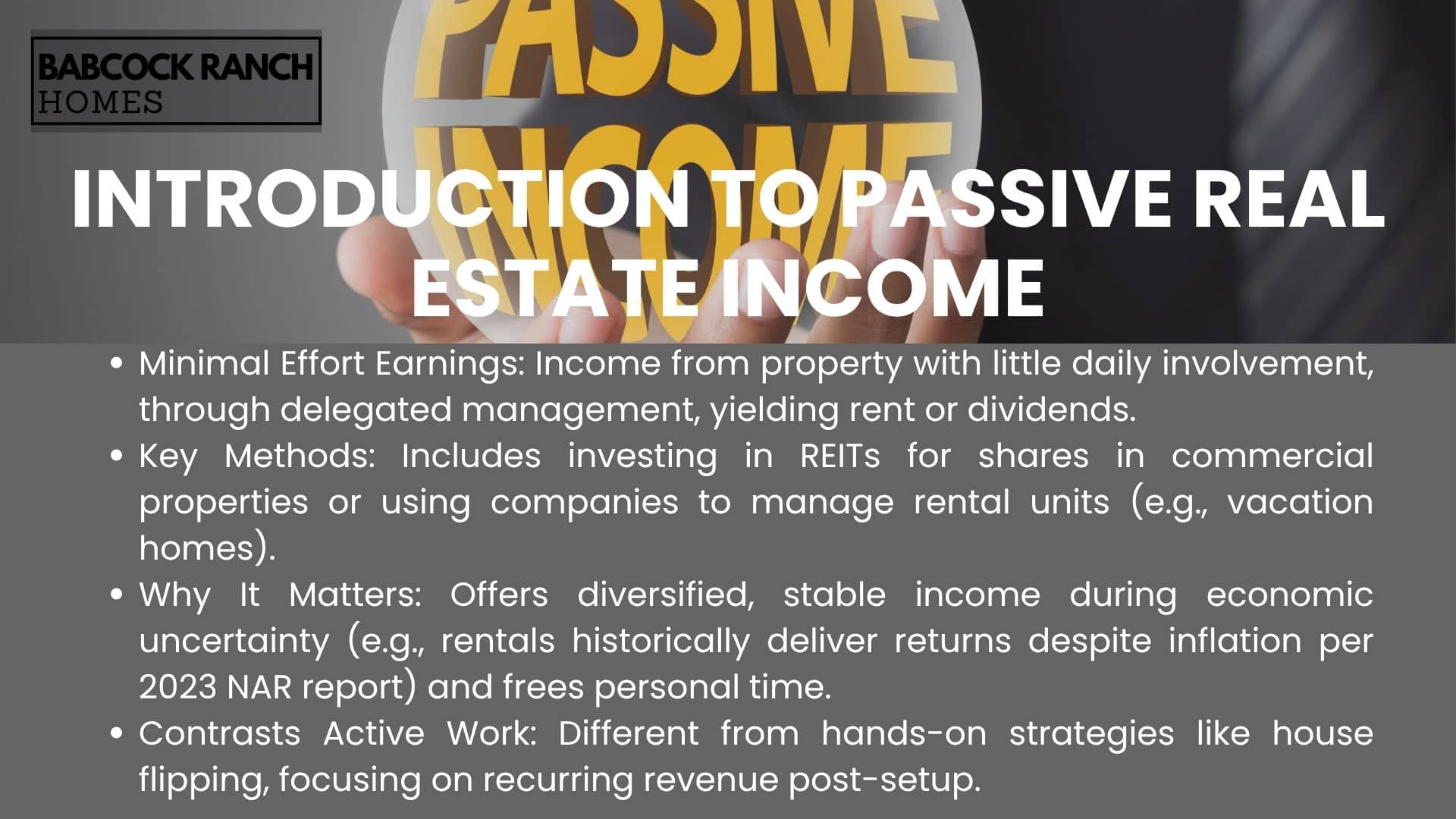
Defining Passive Income in Real Estate
Passive income in property ownership refers to earnings requiring minimal daily effort. Key characteristics include:
- Delegating management tasks to professionals
- Receiving rental payments or dividend distributions
- Benefiting from long-term appreciation
For example, REITs allow investors to own shares in commercial properties without maintaining physical assets. This contrasts with active strategies like house flipping, which demand constant oversight.
Why Passive Income Matters in Today’s Market
Economic uncertainty makes diversified income streams essential. Real estate investing provides stability when stock markets fluctuate – rental demand often persists through recessions. A 2023 National Association of Realtors report showed rental properties delivered 4-8% annual returns despite inflation spikes.
Passive models also free time for other pursuits. Imagine earning $1,500 monthly from a vacation rental managed by a local company. This balance of financial security and personal flexibility appeals to modern investors.
Understanding Active vs Passive Real Estate Investing
Real estate success hinges on selecting the right involvement level. Active strategies demand hands-on work, while passive approaches let professionals handle daily tasks. Both paths offer unique benefits – your choice depends on available time, capital, and risk tolerance.
Key Differences and Similarities
Active investors manage properties directly. They screen tenants, coordinate repairs, and handle lease agreements. This model offers greater control but requires significant time. As one industry report notes:
“Active landlords spend 10+ hours monthly per property, while passive investors average under 2 hours.”
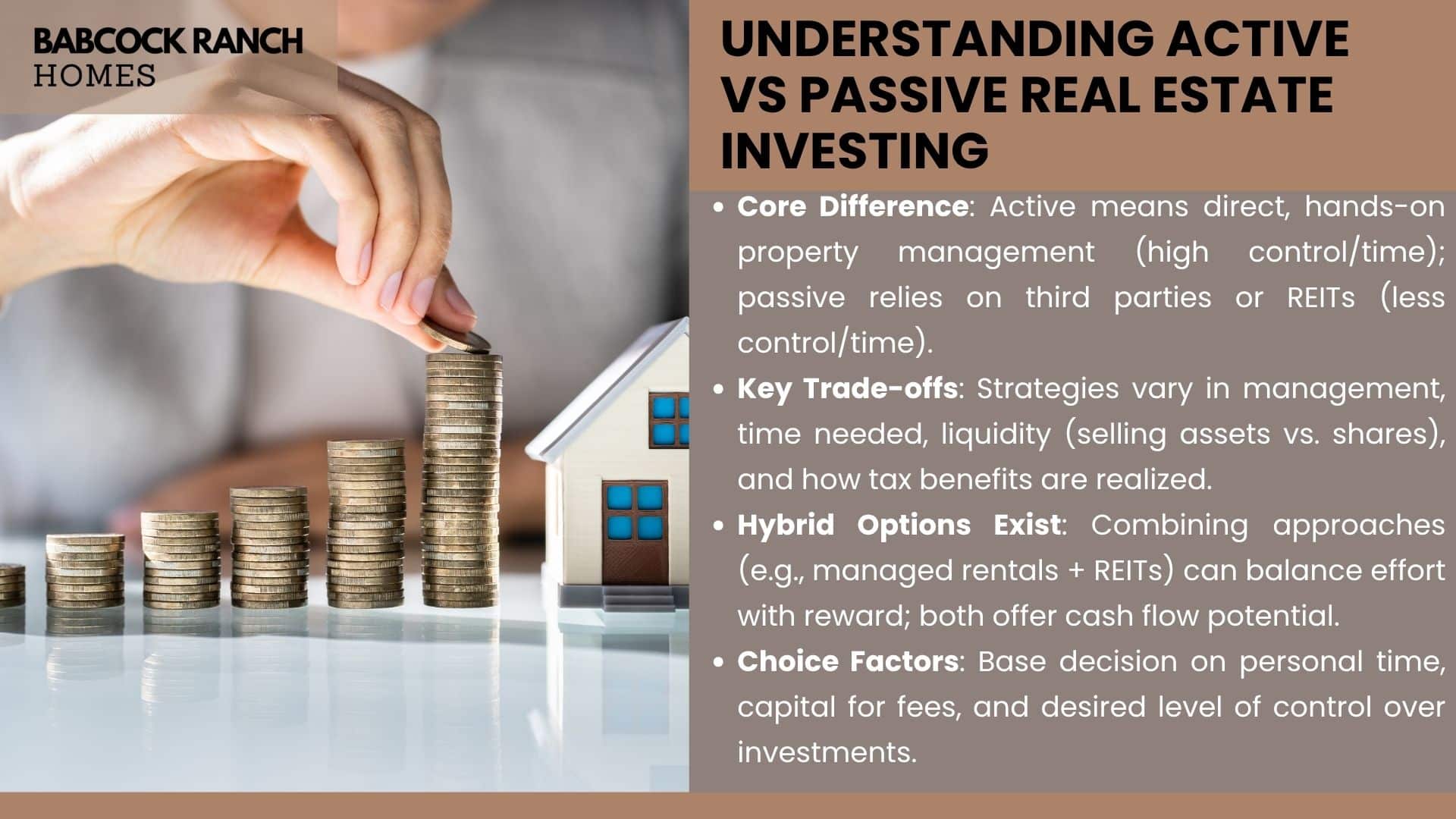
Passive strategies like estate investment trusts (REITs) provide hands-off ownership. Investors earn dividends from professionally managed properties. Key contrasts include:
| Factor | Active | Passive |
|---|---|---|
| Management | Direct oversight | Third-party teams |
| Time Commitment | High | Low |
| Liquidity | 6-12 months to sell | Shares trade daily |
| Tax Benefits | Depreciation + deductions | REIT dividends |
Both approaches share advantages like cash flow potential and portfolio diversification. Tax benefits vary – active investors often claim more deductions, while REITs simplify reporting.
Balancing Effort and Reward
Hybrid models help investors optimize returns. You might own a rental property managed by a local agency while holding REIT shares. Babcock Ranch Homes recommends allocating 60-70% to passive options for time-strapped individuals.
Consider these factors when choosing:
- Available hours for property oversight
- Upfront capital for management fees
- Desired control over asset decisions
New investors often start with REITs or syndications to build experience. As portfolios grow, adding managed rentals creates balanced income streams.
Strategies for How to Create Passive Income with Real Estate
From traditional rentals to innovative partnerships, property ownership offers flexibility for every investor’s timeline and budget. The key lies in selecting methods that match your desired involvement level while delivering reliable returns. Passive real approaches prioritize systems working for you, not the other way around.
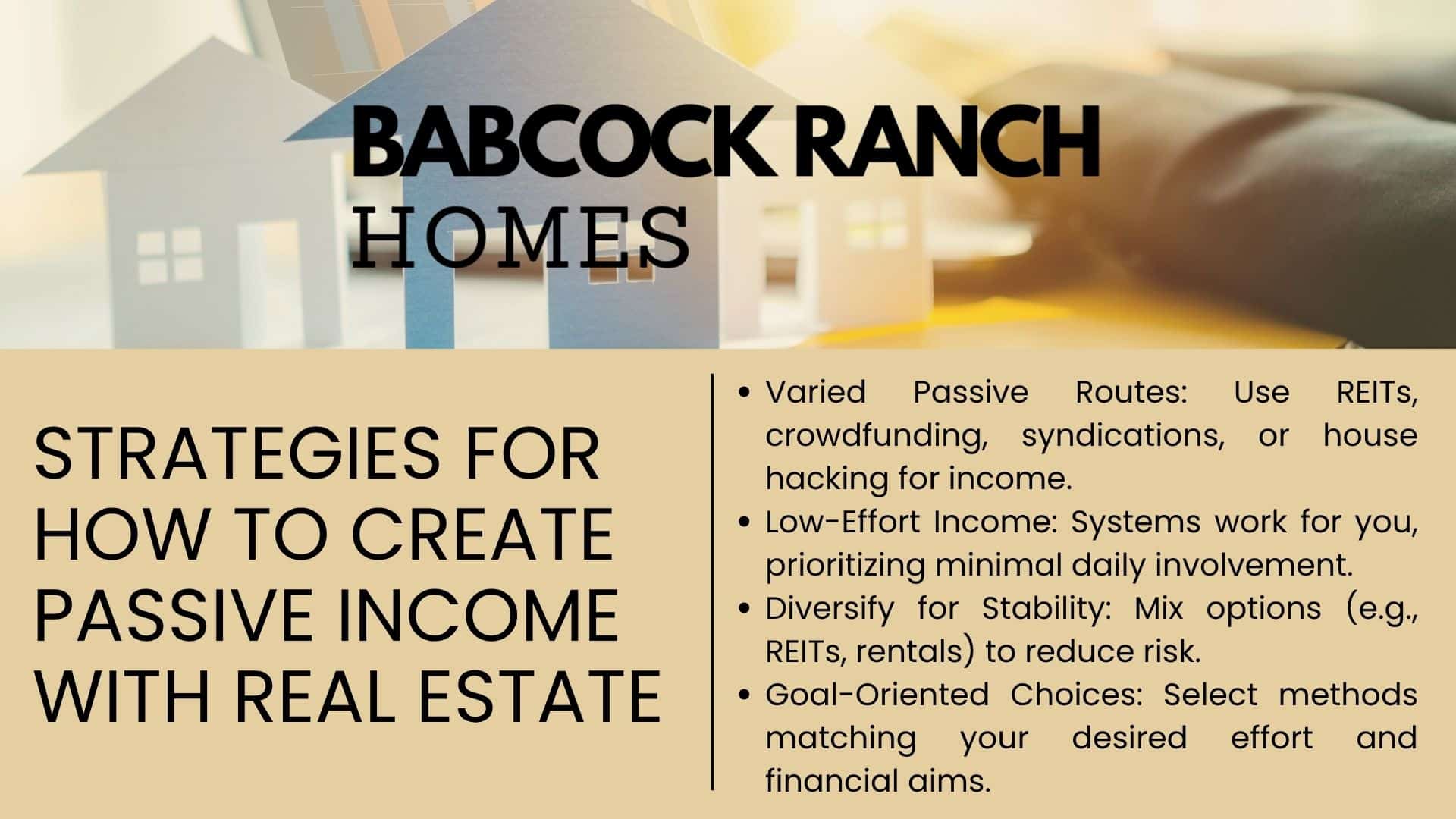
Overview of Diverse Investment Options
Modern estate investing spans multiple models. REITs allow fractional ownership in commercial properties like shopping centers or apartment complexes. Crowdfunding platforms pool funds for larger projects, while syndications offer shared ownership in curated portfolios. Even house hacking – renting part of your primary residence – can offset mortgage costs.
Consider these four approaches:
| Strategy | Minimum Investment | Management | Liquidity |
|---|---|---|---|
| REITs | $500+ | Professional | High |
| Syndications | $25k+ | Sponsor-led | Low |
| Crowdfunding | $1k+ | Platform-managed | Medium |
| House Hacking | Primary Home | Self/Partial | Variable |
Diversifying across estate investments reduces reliance on single properties. A 2023 Urban Institute study found portfolios mixing REITs and rentals had 23% lower volatility than single-asset strategies. Babcock Ranch Homes often guides clients toward blended models, stating:
“Balancing direct ownership with managed funds creates stability during market shifts.”
Ultimately, successful estate investment strategies align with personal goals. Those seeking hands-off growth might prioritize REITs, while budget-conscious investors could explore house hacking first. Regular portfolio reviews ensure methods stay relevant as financial priorities evolve.
Choosing the Right Passive Real Estate Investment Option
Selecting the optimal property investment requires balancing risk, effort, and financial goals. Each option carries unique advantages shaped by market conditions and personal priorities.
Evaluating Ownership Models
Rental properties offer direct control but demand upfront capital. Consider these factors:
- Pros: Higher potential returns, tax deductions, equity growth
- Cons: Maintenance costs, tenant management, local market risks
REITs and syndications provide diversification with less hands-on work. A 2023 Nareit study shows REITs delivered 9.3% average annual returns over the past decade, while private syndications often target 12-15%.
| Factor | Rentals | REITs | Syndications |
|---|---|---|---|
| Minimum Investment | $25k+ | $500 | $25k |
| Liquidity | Low | High | Medium |
| Management | Self/Third-party | Professional | Sponsor-led |
New investors should prioritize markets with steady job growth and low vacancy rates. Florida’s Babcock Ranch area, for example, saw rental demand increase 18% year-over-year according to local MLS data.
Three steps simplify decision-making:
- Assess available capital and risk tolerance
- Compare management fees across options
- Review historical performance in target regions
Blending strategies often yields optimal results. Allocating 40% to rentals and 60% to REITs balances cash flow with market exposure.
How to Invest in Rental Properties for Passive Income
Generating consistent returns through rental properties demands careful planning and market awareness. Location remains the cornerstone of success – neighborhoods with growing employment hubs and quality schools typically yield stable tenant demand.
Steps to Identify Profitable Properties
Begin with these four research-driven actions:
- Analyze neighborhood growth patterns using census data
- Compare local vacancy rates against regional averages
- Evaluate rental demand through platforms like Zillow Rental Manager
- Review property tax histories for expense forecasting
Investment trusts often provide market analytics tools that simplify this process. As Babcock Ranch Homes advises:
“Target areas where new infrastructure projects align with population growth – these often signal rising property values.”
Mastering Financial Fundamentals
Effective cash flow management separates thriving portfolios from struggling ones. Consider this expense-to-income balance:
| Category | Ideal % of Rent |
|---|---|
| Mortgage | 25-35% |
| Maintenance | 10-15% |
| Vacancy Buffer | 5-8% |
| Property Management | 8-12% |
First-time investors should consult tax professionals to maximize deductions. Mortgage structures like 30-year fixed rates provide predictable payments, while adjustable-rate loans might suit short-term strategies.
Three critical due diligence steps:
- Obtain professional home inspections
- Verify zoning regulations and HOA rules
- Calculate capitalization rates for comparable properties
Blending direct ownership with investment trusts creates diversified exposure. This approach minimizes risk while maintaining growth potential in evolving markets.
Property Management and Maintenance Best Practices
Effective property management forms the backbone of sustainable rental success. Whether handling tasks independently or partnering with experts, consistent systems preserve asset value and tenant relationships. Data from the National Association of Residential Property Managers shows professionally managed units experience 22% fewer vacancies on average.
Hiring Professional Property Managers
Third-party management teams streamline operations through established processes. Key advantages include:
- 24/7 tenant support and emergency response
- Market-rate pricing analysis for optimal rent levels
- Vendor networks offering discounted repair services
When selecting a firm, evaluate these factors:
| Criteria | High-Quality Firm | Average Firm |
|---|---|---|
| Fee Structure | Transparent, 8-10% of rent | Hidden charges |
| Reporting | Monthly financial statements | Basic rent collection |
| Local Expertise | 5+ years in your market | Generic approach |
Babcock Ranch Homes notes:
“Our partners reduce maintenance costs by 15% through preventive scheduling and bulk material pricing.”
DIY Management: Tips and Pitfalls
Self-managing requires disciplined systems. Successful owners often:
- Use digital tools for rent collection and lease signing
- Maintain a 6-month reserve fund for repairs
- Conduct quarterly safety inspections
Common mistakes include underestimating time commitments and lacking formal tenant screening processes. Regular maintenance prevents 80% of major repairs according to HomeAdvisor’s 2023 survey.
Balancing professional support with hands-on oversight often yields the best results. Automated rent payments paired with annual HVAC inspections keep properties competitive while minimizing owner workload.
Tax Benefits and Financial Considerations in Real Estate Investing
Navigating tax codes effectively can turn property holdings into powerful wealth-building tools. Savvy investors leverage deductions and financing structures to enhance returns while reducing taxable income. These strategies prove particularly valuable in competitive rental markets where margins matter.
Maximizing Tax Deductions
The IRS allows property owners to offset income through several key deductions:
- Mortgage interest (up to $750k loan value)
- Property taxes (capped at $10k annually)
- Depreciation (27.5-year schedule for residential units)
A 2023 Tax Foundation study showed investors save $3,800 average annually through depreciation alone. Consider this comparison:
| Deduction Type | Annual Savings Example | Eligibility |
|---|---|---|
| Mortgage Interest | $9,200 | Primary/Investment Properties |
| Property Taxes | $4,500 | All Ownership Types |
| Depreciation | $7,300 | Income-Producing Assets |
Financing Strategies and Budgeting
Optimal loan structures vary by market conditions. Fixed-rate mortgages provide stability during rate hikes, while adjustable loans might suit short-term holds. Babcock Ranch Homes recommends:
“Allocate 25% of rental income to maintenance reserves – this buffer prevents cash crunches during vacancies.”
Three steps for financial success:
- Refinance high-interest loans when rates drop 0.75%+
- Use 1031 exchanges to defer capital gains taxes
- Review insurance policies annually for coverage gaps
Investors in Florida’s growing communities often combine deductions with local incentives, achieving 18-22% effective tax rates compared to national averages.
Leveraging REITs and Real Estate Syndications for Passive Income
Expanding property portfolios doesn’t require direct ownership. Modern investment vehicles enable participation in lucrative markets through collective models. These approaches combine professional management with accessible entry points.
Understanding the Role of REITs
Real Estate Investment Trusts (REITs) let multiple investors own shares in income-generating properties. They typically focus on commercial assets like:
- Apartment complexes
- Office buildings
- Retail centers
REITs must distribute 90% of taxable income as dividends. This structure delivers consistent returns without property maintenance. A 2023 Nareit report shows public REITs averaged 8-10% annual returns over five years.
| Feature | REITs | Direct Ownership |
|---|---|---|
| Minimum Investment | $500 | $25k+ |
| Liquidity | Daily trading | 6-12 months |
| Management | Professional teams | Self-directed |
Advantages of Real Estate Syndications
Syndications pool resources for larger projects like luxury developments. Investors become limited partners while sponsors handle operations. Key benefits include:
- Access to premium properties with $25k+ investments
- Preferred returns (often 8% annually before profit splits)
- Tax advantages through depreciation
Babcock Ranch Homes highlights a recent case where syndication participants earned 12-15% returns on a Florida mixed-use development. These models work well for those seeking exposure to high-value assets without daily oversight.
Diversification and Risk Management in Real Estate Investments
Smart investors know putting all their money in one property type invites unnecessary risk. Spreading investments across residential, commercial, and industrial assets creates stability. A 2023 Urban Land Institute study found diversified portfolios had 35% fewer income fluctuations during economic downturns.
Strategies to Spread Your Investment Risk
Allocating money wisely across markets and property classes protects against localized slumps. Consider this approach:
| Property Type | Risk Level | Ideal Allocation |
|---|---|---|
| Single-Family Rentals | Moderate | 40-50% |
| Multi-Unit Apartments | Low | 25-35% |
| Commercial Spaces | High | 15-20% |
Geographic diversity matters too. Florida’s Babcock Ranch region saw 14% annual rental growth in 2023, outperforming national averages. Pairing stable markets with emerging areas balances cash flow and growth potential.
Mitigating Market Volatility
Experienced management teams reduce operational risks. Partnering with firms handling tenant screening, maintenance, and lease enforcement frees investors to focus on strategy. Babcock Ranch Homes reports clients using professional services maintain 92% occupancy rates versus 78% for self-managed units.
Three proven tactics:
- Maintain 6-12 months of reserve funds
- Mix fixed-rate and variable-income assets
- Review portfolio performance quarterly
Balancing high-risk development projects with steady rentals ensures progressive growth. As one industry analyst notes:
“Portfolios blending 70% core assets and 30% opportunistic investments deliver optimal risk-adjusted returns.”
Innovative Approaches: House Hacking and Alternative Strategies
Thinking outside traditional property models unlocks opportunities for budget-conscious investors. One standout method allows homeowners to transform their living spaces into income generators with minimal initial costs.
House Hacking Explained
House hacking involves renting portions of your primary residence. A basement conversion, for example, could yield $800 monthly while covering 30-40% of mortgage payments. This approach reduces upfront cash needs compared to buying separate rental properties.
Popular setups include:
- Converting garages into studio apartments
- Renting spare rooms to long-term tenants
- Building backyard accessory dwelling units (ADUs)
Web data shows 62% of house hackers break even on housing costs within two years. Over time, these strategies become a hands-off way to build equity. One Florida homeowner reported earning $18,000 annually from their ADU while maintaining full privacy.
Alternative methods expand possibilities further:
- Co-living arrangements with shared common areas
- Renting driveway space for vehicle storage
- Hosting pop-up retail spaces in underused rooms
Successful integration requires clear boundaries. Use separate entrances and smart locks to maintain personal space. Always verify local zoning laws – some areas restrict ADUs or short-term rentals. As one investor notes:
“Starting small lets you test concepts without major renovations. My converted attic now covers 60% of utilities.”
Steps to Start Your Passive Real Estate Journey
Launching a successful property strategy begins with intentional preparation. New investors often overlook foundational steps, leading to preventable setbacks. By prioritizing research and measurable objectives, you lay the groundwork for sustainable growth.

Research and Education Essentials
Knowledge gaps cost investors an average of $12,000 annually according to a 2023 Real Estate Wealth report. Start with these actions:
- Study local market rates using tools like Zillow Research
- Attend virtual seminars hosted by accredited associations
- Review case studies from established investment firms
Babcock Ranch Homes recommends analyzing three key metrics: capitalization rates, vacancy trends, and property tax histories. This approach helps identify neighborhoods with strong cash flow potential.
Setting Clear Investment Goals
Define your targets using SMART criteria – specific, measurable, achievable, relevant, and time-bound. A sample framework:
| Goal Type | Example | Timeline |
|---|---|---|
| Cash Flow | $500/month net income | 12 months |
| Portfolio Size | 3 properties | 5 years |
| Risk Tolerance | 15% market fluctuation | Ongoing |
Diversify your portfolio across property types and locations to mitigate risk. Beginners might allocate 60% to residential rentals and 40% to REITs. Regular consultations with financial advisors ensure strategies stay aligned with evolving markets.
Conclusion
Building a resilient financial future requires strategic choices. Throughout this guide, we’ve explored proven methods like REITs, syndications, and real estate crowdfunding – all designed to generate payments with minimal oversight. Diversification across property types and markets remains critical for balancing growth and stability.
Key advantages include hands-off cash flow, tax benefits, and exposure to commercial real estate opportunities. Platforms offering fractional shares lower entry barriers, while professional management teams handle daily operations. Continuous research helps investors adapt to shifting trends and maximize returns.
Success hinges on aligning options with personal goals. Whether exploring residential rentals or innovative crowdfunding models, expert partnerships simplify complex decisions. Babcock Ranch Homes provides tailored insights for those entering Florida’s thriving markets.
Ready to unlock real estate income potential? Start by evaluating your risk tolerance and capital. With careful planning, these strategies can transform your portfolio. Sustainable wealth awaits those who act decisively.

